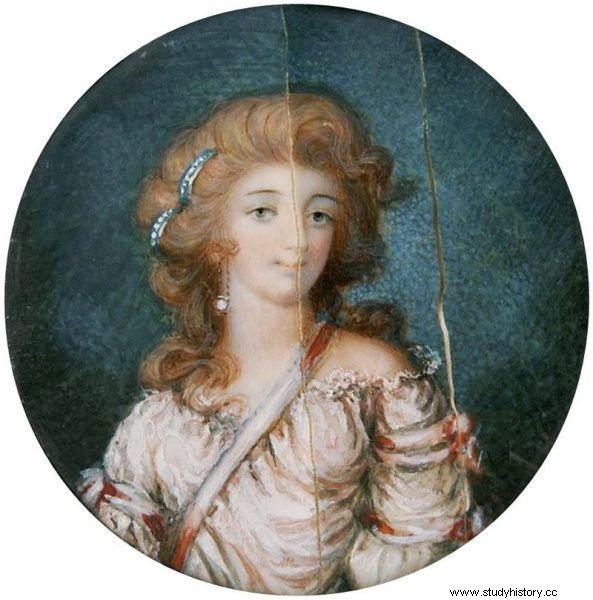In her youth she was hailed the most beautiful woman in Europe. She started with an Istanbul harem and ended as the wife of one of the richest people in Poland. Her fascinating life ended with an extraordinary journey. A journey in which a woman's body ... became a puppet, pretending to be a living person.
Zofia Glavani became the heroine of the most spectacular social advancement in the history of Poland. From the mistress of the Polish envoy in Istanbul, through the wedding with the commander Józef Witt, to the relationship with Stanisław Szczęsny Potocki, a Pole from Targovice.
In the meantime, she had fun with a lot of lovers - among them the French blood princes, the famous Grigory Potemkin and the Pole-eater Nikolai Novosiltsov, known from the work of Mickiewicz. Countess Potocka had no qualms even before an affair with her 16 years younger stepson.
She ended her long and turbulent life in suffering, expelled from her husband's estate by her son, Mieczysław Potocki, whom she publicly called a bastard in return. She left for St. Petersburg, where she tried to arrange inheritance matters. Stating that the local climate was unfavorable for her, she decided to go to Vienna. Due to her poor health, she only reached Berlin, where she was supposed to be dealt with by specialists.
In the capital of Prussia, Countess Potocka felt that death was near. The disease almost chained her to bed. Numerous hemorrhages weakened her, and the pain in the area of the kidneys made it impossible to even sit up. Today, historians suspect that she suffered from cancer of the genital tract. She still managed to meet her daughters, Zofia née Potocki Kisielew and Olga Potocka. She died on November 24, 1822 at the age of about 62. However, the last trip was still ahead of her.
A living dead in a carriage
Countess Zofia expressed her will to be buried in Uman belonging to the Potocki family. This town was then in the Russian Empire. Thus, in order to fulfill the deceased's wish, it was necessary to transport the body across the Prussian-Russian border. Once the tsar agreed to transport them to Russia, only one problem remained. As Joanna Puchalska writes in the book "Because they were bad women", the Prussian authorities still delayed issuing the permit, "even though the body was embalmed, and by the local doctor". The strict sanitary regulations in the Kingdom of Prussia stood in the way.

Despite the neoplastic disease consuming her, Wittowa aka Potocka reportedly lost none of her charm. She was buried next to one of the most beautiful parks in Europe - established especially for her by her husband, Sofiówka, who is in love.
The countess' daughter, Olga Potocka, saw no other choice - her beloved mother had to be taken back to her homeland. She decided to outsmart the Prussians with the help of her sister's husband, the tsarist general Paweł Dmitriewicz Kiselev. The plan was simple - it was based on the fact that no one would dare to carefully control the passage of a Russian senior officer. Paweł rode in the first carriage of the "funeral procession". Meanwhile, as Joanna Puchalska writes:
The embalmed body, dressed in a rich dress, was placed in a second carriage. Countess Potocka, who was sitting between Zofia and Olga, was painted, she had a fan in one hand and a bouquet of flowers in the other. She crossed the border as a living person, but indisposed. It was assured that she had just fallen asleep. The passports were fine, the general uniform of Paweł Kiselew was also working and the soldiers, saluting, let the passengers pass.
After this traumatic trip, during which the daughters were forced to hug their dead mother, there was a wonderful funeral in Uman. The ceremony took place at night, and the countess escorted what they hoped to do on the last journey of fifty priests and crowds of people. However, this was not the last move of Zofia.
In 1838, after the tsarist family had taken over the Humani goods, the coffin with the body of Zofia Potocka was moved to Talne, a town that Olga inherited from her mother. Unfortunately, after the revolution of 1917, the tomb containing the remains of the beautiful countess was plundered.
Sources:
Basic:
- Joanna Puchalska, Because they were bad women, Ed. Fronda 2017.
Secondary:
- Jerzy Łojek, The history of beautiful Bitynka. The life story of Zofia Potocka 1760-1822, Ed. Glob 1988.
